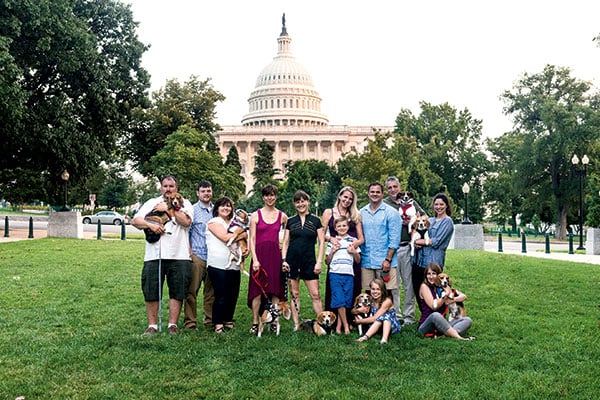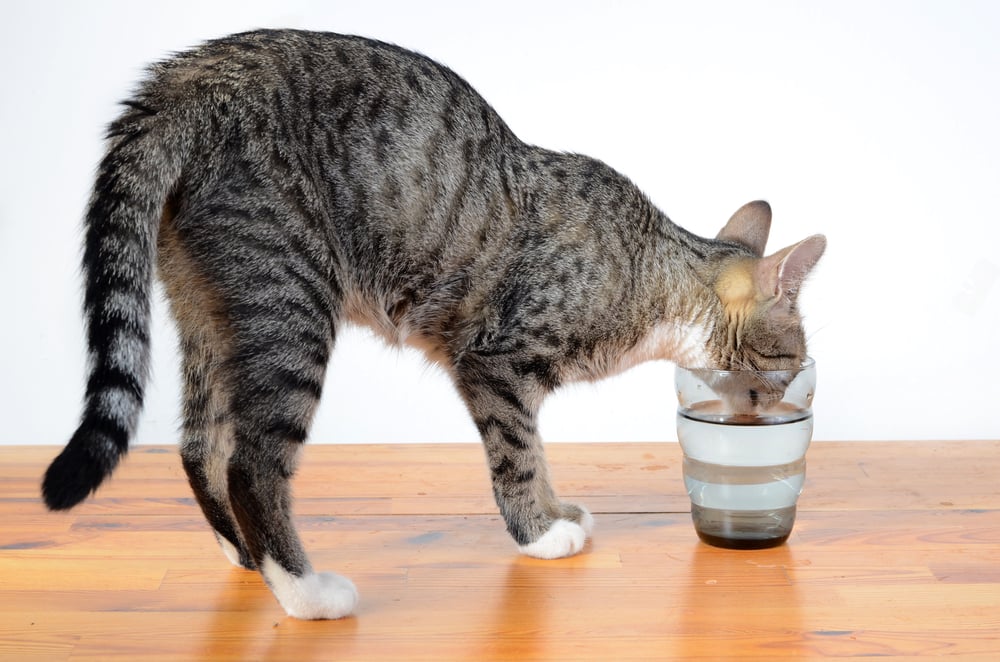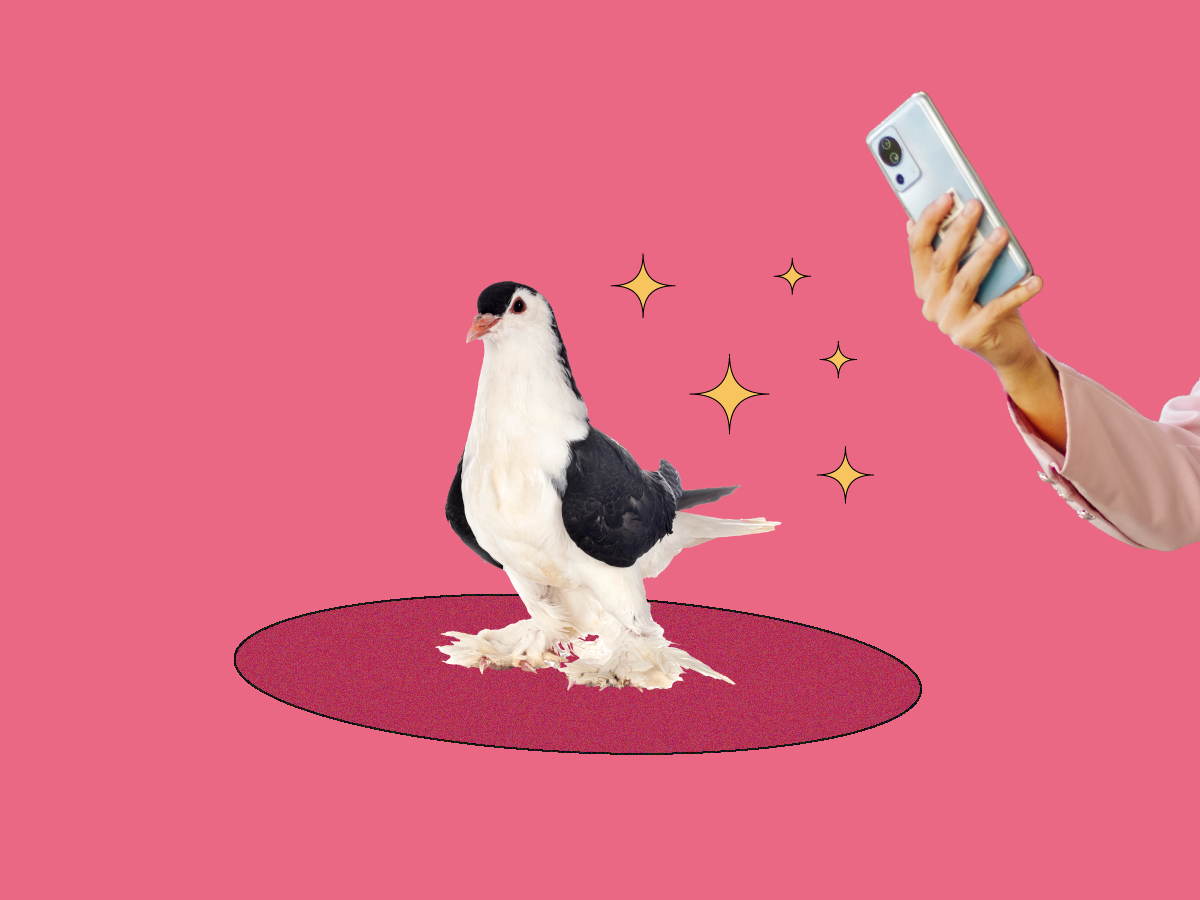Last summer, a beagle with a blue tattoo in his left ear dropped into my home as if from another planet. He was underweight, and when I lowered him onto a dog bed, it was clear he’d never, in his four years of life, encountered anything so squishy and soft. He clung to that bed as if it were a life raft.
Among the few things I knew about this creature: His vocal cords had been cut, and he had probably never seen stairs, so I didn’t bother blocking off the second level of my Capitol Hill rowhouse. When he dared to leave, he did so guardedly. Catching his reflection in the side of a car was enough to send him pulling me home, frantically. His anxiety drove him to several escape attempts, once maneuvering through my balcony railing onto a neighbor’s roof.
In a way, this dog did arrive from another world—one in which breeders send their puppies to laboratories to become testing animals, each identified by a tattooed tracking number. My beagle was rescued with six others from a Virginia lab by a nonprofit organization called the Beagle Freedom Project. On the day these hounds left the only life they’d known, it was clear that even the most basic canine experiences—walking on grass and touching humans—were alien.
Each of the DC7, as they became known, was named after a Founding Father. Six weeks after I began fostering Alexander Hamilton, his personality was still clouded by fear and I didn’t know how much he would change. After all, labs claim that these dogs—with their lack of exposure to the real world—don’t make suitable pets. Freeing them only draws public attention to the 70,000 dogs still in testing facilities (many of which are beagles, because they’re so docile). According to the Beagle Freedom Project, this is how labs justify killing them as standard practice, discarding Hamiltons as if they were test tubes.
I told Hammy that if I adopted him, every day would be an adventure. “You’ll have to be very brave,” I said. He looked at me with his quiet brown eyes. We struck a deal.
As summer turned to fall, Hammy relaxed enough to walk around the block. I remember the first time I saw his tail wag in his sleep, and I imagined his dreams about running free. His veterinarian told me that his vocal cords—which had been cut so lab techs wouldn’t be disturbed by howling—could grow back. Before long, he was barking at the mailman. My neighbor quipped, “He’s like Pinocchio! He’s turning into a real dog.”
Hammy wasn’t the only one who’d been transformed. Sitting with him for hours upon hours, trying to fill his early silences with comforting words, had changed me, too. I started to boycott products tested on animals, buying laundry detergent and mascara from “cruelty-free” companies such as Method and Lush. Uncharacteristically, I took on a cause, telling my beagle’s story to all who would listen and showing them the tattoo in his ear.
This past spring, Minnesota became the first state to require that dogs and cats in taxpayer-funded laboratories be made available for adoption after testing rather than put to death. Around the same time, Hammy went for a 50-mile ride in his bike trailer, camped, joined me on a standup paddleboard, and visited his 16th state.
This summer, the DC7 returned to Washington to celebrate a year of freedom. As the families and dogs walked around the Capitol grounds, tourists asked if a beagle convention was under way. I looked at all the wagging tails and marveled at the difference a year of love and patience can make.
These days, Hammy’s need for human touch is profound. When he’s sleeping, I watch little pffts of breath leak out of his cheeks. I run my hand over his soft face and floppy ears and wonder what they did to him on the other planet. He wakes, stretches, and looks at me with sleepy eyes. Then he paws me insistently, wanting affection. And I oblige.
The Dogs After Their Rescue in 2013
Washington writer Melanie D.G. Kaplan’s website is melaniedgkaplan.com. This article appears in the September 2014 issue of Washingtonian.
















